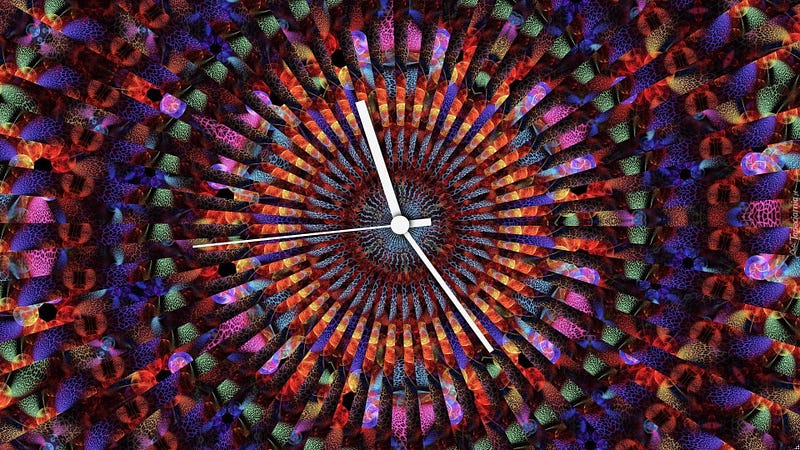Exploring the Quantum Origins of Our Universe
Written on
Chapter 1: The Birth of the Universe and Quantum Insights
This section introduces various concepts related to quantum fields, exploring philosophical inquiries and insights about the origin of our universe.
This paragraph will result in an indented block of text, typically used for quoting other text.
Section 1.1: Understanding Space and Time
The article discusses the emergence of our universe, the discovery of spacetime, and the significance of real-world experiments in affirming the principles of physics. These principles help us grasp the existence of cosmic entities that may not necessarily interact with us. Some inquiries presented here delve into philosophical realms within theoretical physics.
A notable partnership was introduced in 1905, emphasizing the relativity of motion, time, and speed in relation to the observer. It established that particles cannot surpass the speed of light. General relativity, formulated in 1915, elaborates on gravity and how mass influences the curvature of spacetime, affecting the motion of particles.
Quantum physics elucidates the interactions between particles that constitute matter and the energy binding them. It serves as a framework for understanding the mechanics of the universe. Einstein was a pioneering figure in transitioning from classical theories to concepts of relativity and quantum mechanics, including gravitational waves.
Numerous quantum theories emerged, with contributions from notable scientists like Niels Bohr, Werner Heisenberg, and Erwin Schrödinger in the 1920s. These theories describe how the state or energy of particles evolves over time. Three fundamental forces binding matter include electromagnetism, which governs atomic cohesion; the strong nuclear force, which ensures atomic stability; and the weak nuclear force, which governs certain decay processes. Collectively, these forces are encapsulated in the Standard Model of Particle Physics, which, however, falls short in explaining certain limitations.
Section 1.2: The Notion of a Multiverse
Most people accept that the universe had a beginning. Some scientists argue that the exact moment of creation eludes explanation through current physical laws. We understand that gravitational waves arise from the movement of massive bodies; Einstein predicted these phenomena in his theory of relativity.
Around 13.8 billion years ago, the Big Bang marked the inception of our universe, which can extend up to 13.8 billion light-years away. Beyond this observable universe, we might speculate about the existence of other universes, suggesting the possibility of a multiverse and multiple Big Bang events.
A significant advancement in our comprehension of the universe came with the discovery of the Higgs boson. This particle plays a crucial role in explaining why some particles possess mass while others do not. Following Einstein's equation E=mc², we can infer that sufficient energy can yield mass.
Theories surrounding the universe's origins provoke endless debate. I posit, based on various arguments, that the conservation law suggests our universe was created from a singular event. Alternatively, there exists a theory proposing that creation is an infinite cycle without a definitive beginning or end.
The first video titled "What Came Before the Big Bang? Quantum Creation" discusses how a universe can emerge from nothing, raising profound philosophical questions.
The second video, "This Universe Existed Before The Big Bang," featuring Roger Penrose, delves into the concept of prior universes and their implications.
Chapter 2: The Nature of Time and Perception
Artists and scientists alike have represented time in diverse ways, including Dali’s iconic "melting clocks." Time can be perceived as pure, relative, or perfect, serving as a fundamental unit for all time-measuring devices. It denotes the occurrence of events, recurring instances, or references to repetition.
Space is viewed as an infinite expanse where matter exists physically rather than temporally. The theory of relativity challenges the notion of absolute motion, introducing a four-dimensional spacetime continuum. This framework merges space and time, leading to a complex understanding of how they interact.
In modern views, the interpretation of time varies greatly among individuals, influenced by factors such as age, education, and psychological state. For instance, time may seem to fly when we are engaged in enjoyable activities, while it drags during periods of boredom.

Moreover, the perception of time can differ across cultures, and while clocks measure time uniformly, subjective experiences vary. In our universe, time seems to flow continuously, yet this may not hold true in other galaxies where known laws may not apply.
In digital realms, continuous movement can be observed, yet time is fundamentally discrete, with intervals between moments where unpredictable events could occur.

The experience of time influences our entire life cycle, from birth to death. Adjustments to time zones illustrate our biological clocks’ responses to temporal changes, as seen in phenomena like jet lag.
As we explore the intricate relationship between time, perception, and existence, we encounter challenges in discerning timeless events without making assumptions and predictions.

According to Einstein, time is akin to a river, flowing around celestial bodies, with each location experiencing its unique temporal rhythm. The understanding of time's passage varies considerably, as does the perception of energy, which does not conform to a linear progression.
Quantum leaps, a fascinating phenomenon, occur when electrons transition between energy levels without a temporal delay. This challenges our conventional understanding of time and space.
In the realm of physics, experiments are vital for validating theoretical concepts. While some argue that theoretical physics lacks value without experimental backing, others believe that the synthesis of theory and experimentation is a complex endeavor requiring logical and mathematical rigor.

The most groundbreaking scientific insights often arise from the intersections of thought within a scientist's mind, rather than solely through empirical experimentation. Recent discussions highlight the need for a balance between theoretical understanding and experimental verification in advancing our comprehension of the universe.